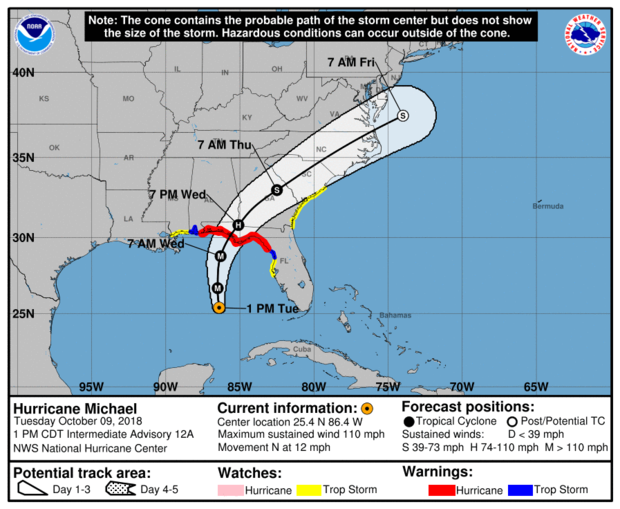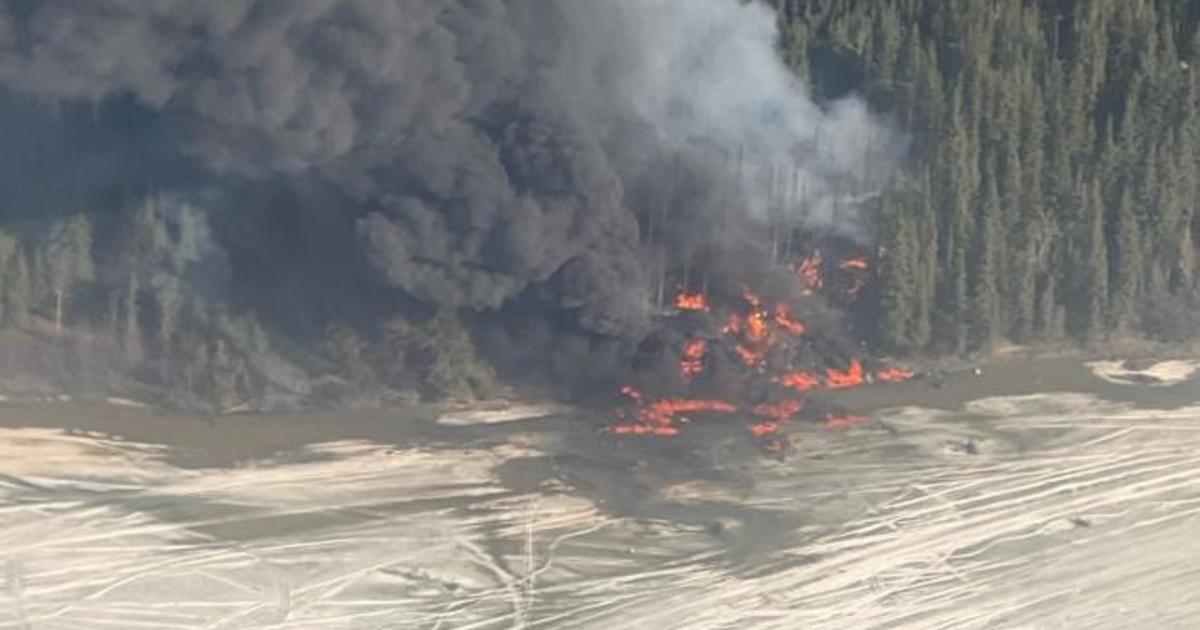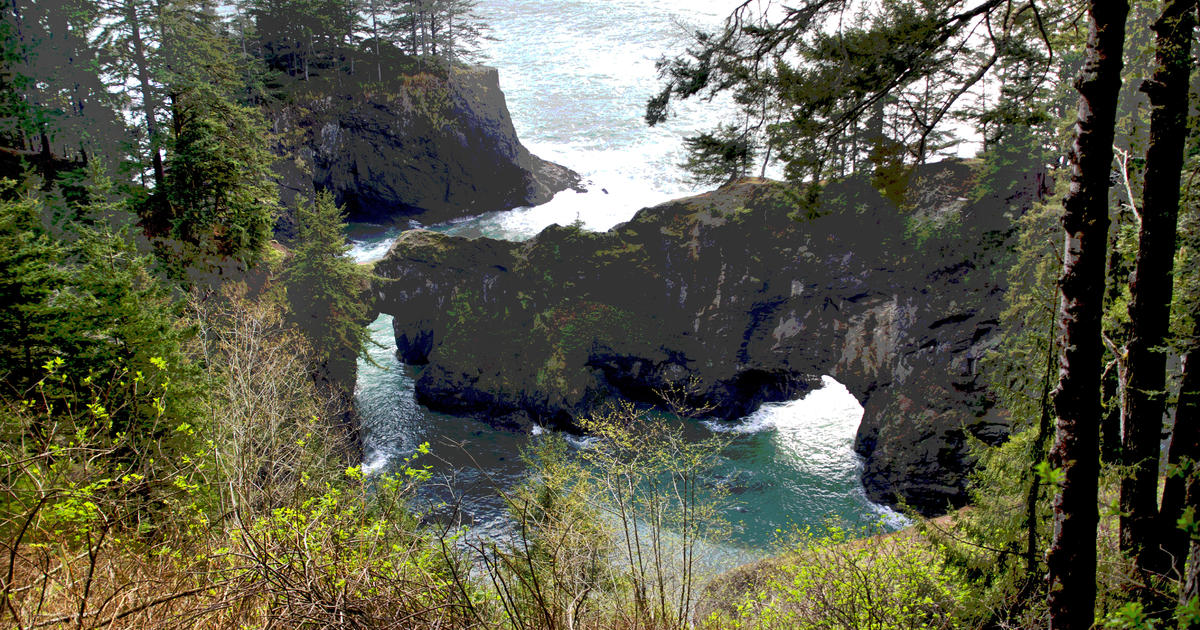"Monstrous" Hurricane Michael eyeing Florida's Gulf Coast
Please see here for the latest up-to-date information on Hurricane Michael. Monday's original story appears below.
TALLAHASSEE, Fla. -- A fast and furious Hurricane Michael sped toward the Florida Panhandle on Tuesday with 110 mph winds and a potential storm surge of 12 feet, giving tens of thousands of people precious little time to get out or board up. Drawing energy from the warm waters of the Gulf of Mexico with every passing hour, the storm was expected to blow ashore around midday Wednesday near Panama City Beach, along a lightly populated stretch of fishing villages and white-sand spring-break beaches.
Florida Gov. Rick Scott said Michael was expected to be the most destructive storm to hit the Panhandle in decades. "This storm is dangerous, and if you don't follow warnings from officials, this storm could kill you," Scott said at a press conference.
While Florence took five days between the time it turned into a hurricane and the moment it rolled into North Carolina and South Carolina, Michael gave Florida what amounted to two days' notice. It developed into a hurricane on Monday, and by Tuesday, more than 140,000 people were under mandatory evacuation orders.
"We don't know if it's going to wipe out our house or not," Jason McDonald, of Panama City, said as he and his wife drove north into Alabama with their two children, ages 5 and 7. "We want to get them out of the way."
Coastal residents rushed to board up their homes and sandbag their properties against the hurricane, which was speeding northward at 12 mph. As of 2 p.m. ET, Michael had winds of 110 mph, just below a Category 3 hurricane, and was getting stronger as it moved over Gulf waters in the mid-80s.
Hurricane-force winds extended up to 35 miles from its center. Scott warned Michael was a "monstrous hurricane," and his Democratic opponent for the Senate, Sen. Bill Nelson, said a "wall of water" could cause destruction along the Panhandle.
"Don't think that you can ride this out if you're in a low-lying area," Nelson said on CNN. But some officials were worried by what they weren't seeing — a rush of evacuees.
"I am not seeing the level of traffic on the roadways that I would expect when we've called for the evacuation of 75 percent of this county," Bay County Sheriff Tommy Ford said. Aja Kemp, 36, planned to stay in her mobile home in Crawfordville.
Kemp worked all night stocking shelves at a big-box store that was closing later Tuesday, then got to work securing her yard. She said the bill totaled over $800 when she and her family fled Hurricane Irma's uncertain path last year.
"I just can't bring myself to spend that much money," she said. "We've got supplies to last us a week. Plenty of water. I made sure we've got clean clothes. We got everything tied down."
In the dangerous exposed coastal town of Apalachicola, population 2,500, Sally Crown planned to go home and hunker down with her two dogs. "We've been through this before," she said. "This might be really bad and serious. But in my experience, it's always blown way out of proportion."
Hurricane Michael mandatory evacuations
Mandatory evacuation orders went into effect in Bay County for people in Panama City Beach and other low-lying areas in the bull's-eye. Other mandatory orders affected people in Citrus County, Dixie County, Franklin County, Gadsden County, Gulf County, Jackson County, Jefferson County, Levy County, Okaloosa County, Taylor County, Wakulla County and Walton County.
More information was available on the Florida Division of Emergency Management's website. At a press conference, Scott urged Floridians to heed evacuation orders.
"Evacuations are not fun," Scott said. "They're not convenient. There's nothing good about evacuations other than it's going to save your life."
In Escambia County, on the western edge of the Panhandle, evacuations began in Pensacola Beach and other vulnerable areas, but not in Pensacola itself, a city of about 54,000. Scott urged Floridians to have three days of food and water with them, warning that it was possible for the storm to change direction.
In Washington, President Trump told reporters at the White House that the government was "very well prepared" for Michael. Mr. Trump made the comments before announcing that U.N. Ambassador Nikki Haley would be leaving her post at the end of the year.
Mr. Trump said in the Oval Office meeting with Haley that the hurricane was "much bigger than they anticipated a week ago." He added, "Hopefully we'll get lucky, but maybe that won't happen, but we're prepared."
Forecasters said parts of Florida's marshy, lightly populated Big Bend area — the crook of Florida's elbow — could see up to 12 feet of storm surge. About 20 miles in from the coast, in Tallahassee, the state capital, people rushed to fill their gas tanks and grab supplies.
Many gas stations in Tallahassee had run out of fuel, including the Quick 'N' Save, which was also stripped clean of bottled water and down to about two dozen bags of ice. Tallahassee Mayor Andrew Gillum, Florida's Democratic nominee for governor, helped people fill sandbags.
Michael could dump up to a foot of rain over some Panhandle communities before it sweeps through the Southeast and goes back out to sea by way of the mid-Atlantic states over the next few days. Forecasters said it could bring 3 to 6 inches of rain to Georgia, North Carolina, South Carolina and Virginia, triggering flash flooding in a corner of the country still recovering from Hurricane Florence.
"I know people are fatigued from Florence, but don't let this storm catch you with your guard down," North Carolina Gov. Roy Cooper said, adding, "A number of homes have rooftop tarps that could be damaged or blown away with this wind." While Florence wrung itself out for days and brought ruinous rains, fast-moving Michael is likely to be more about wind and storm surge.
As the storm closed in on the U.S., it caused havoc in the Caribbean. In Cuba, it dumped more than 10 inches of rain in places, flooding fields, damaging roads, knocking out power and destroying some homes in the western province of Pinar del Rio.
Cuban authorities said they evacuated about 400 people from low-lying areas. Disaster agencies in El Salvador, Honduras and Nicaragua reported 13 deaths as roofs collapsed and residents were carried away by swollen rivers.




